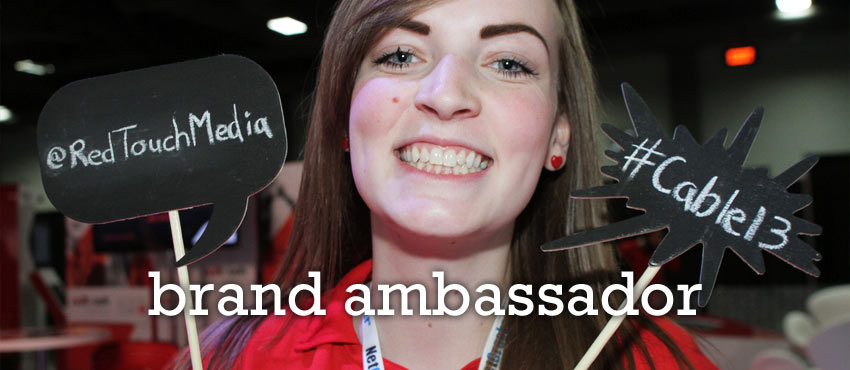Companies spend huge amounts of money on branding. They fork out for banners and stands, for campaigns, for exhibitions, for promotional items, for gifts, for sponsorships, and for anything else that they think will make them more visible, more recognisable, and more attractive to consumers. Often, they forget one very important detail: Their employees.

You see, all it takes is one dissatisfied comment, one grumpy frown, one petulant tone of voice, or one broken promise from one employee and it won’t matter how eye-catching the banners, how creative the campaigns, how interesting the exhibitions, how exciting the events, how cool the promotional items, how lavish the gifts, or how generous the sponsorships – your image will be tarnished.
And it won’t be tarnished with just the people who witnessed the comment, frown, tone of voice or broken promise. Thanks to social media, everyone will know that your company doesn’t walk its talk.
So, if companies really want to build a successful brand, they have to start with their employees.
Employee branding
It’s built on a simple enough principle: Happy employees = natural brand ambassadors.
Well, we say the principle is simple, but it takes a lot of effort to make and keep employees happy. There are a lot of factors that need to be considered.
For one thing, employees can’t be happy unless they can identify with the brand, and they can’t identify with the brand unless they understand the brand, and they can’t understand the brand unless they get training, but they won’t embrace the training if they don’t have the right incentives or motivation.
It can get quite complicated. But, as with all branding efforts, you can simplify the matter by developing a sound employee branding strategy.
What goes into an employee branding strategy?
There are a lot of aspects to employee branding, we look at four of the most important:
1. Training
It’s important to note that training isn’t restricted to the actual job that the person was hired to do. Yes, you need to ensure that your new bookkeeper knows their way around the data capturing and filing systems used, and understands the policies regarding petty cash and invoice payments. But you also need to ensure that they understand your company’s goals and are aware of their role on the path to achieving to those goals. They need to understand the mission and vision and be indoctrinated into the culture.
2. Motivation
Very few people are willing to work just for work’s sake. Alas, a pay cheque at the end of the month is not always motivation enough. You need to make your employees want to do their jobs to the best of their ability. Take heart because it doesn’t all revolve around money.
People want to feel valued. They want their efforts recognised. It may be clichéd, but an employee of the month award can do wonders for morale and can give your employees the motivation they need to work to earn it. The award should have meaning. You can use the traditional photo in the lobby, but accompany it with something personal. Mary in accounts might like flowers, so she’d appreciate a bouquet with her award. Dan in sales might be a keen golfer, so a box of balls or a driver head cover might go down well.
3. Workplace environment
How difficult do you think it is for Google employees to be brand ambassadors? It’s probably not difficult at all. It’s probably as easy as sliding down a fire pole. This is because Google employees love going to work. It’s fun.
You don’t have to install a fire pole, but you can do other things, like keep the windows clean so that lots of natural light comes through. You can have pot plants to make the office seem alive (plus it’s been found that plants reduce stress and fatigue, boost creativity, and purify the air).
You could have everyone shutdown their computers half an hour early every Friday and have a chat or feedback session with beer and soft drinks in the meeting room. This allows everyone to share ideas, air their views, and even discuss points of dissatisfaction in a relaxed setting.
If you work in a particularly stressful industry you could also have a Tantrum Room: a room with some inflatable mallets and a punching bag where employees can let off some steam.
4. Leadership
You need to lead by example. If you don’t live and breathe your brand, how can you expect your employees to? If you don’t give 110% to every workday, how can you expect your employees to? If you can’t keep your cool in stressful situations, how can you expect your employees to? If you can’t stay positive in the face of difficult problems, how can you expect your employees to?
You and your management teams need to be brand ambassadors before you can expect your employees to take on the role.
There are many more things to consider when creating an employee branding strategy. But perhaps the most important step is to realise that you need a strategy in the first place. So, set aside some of your budget for Facebook marketing, exhibition stands, and charity sponsorships and invest it where it can make a tangible difference; invest it in your employees.
About the Author: Jemima Winslow has worked for many companies, some good and some bad, and can honestly say that the biggest difference to her attitude has been the attitude of her boss. She heartily recommends leading by example as an effective employee branding strategy.
Photo credit: Red Touch Media




